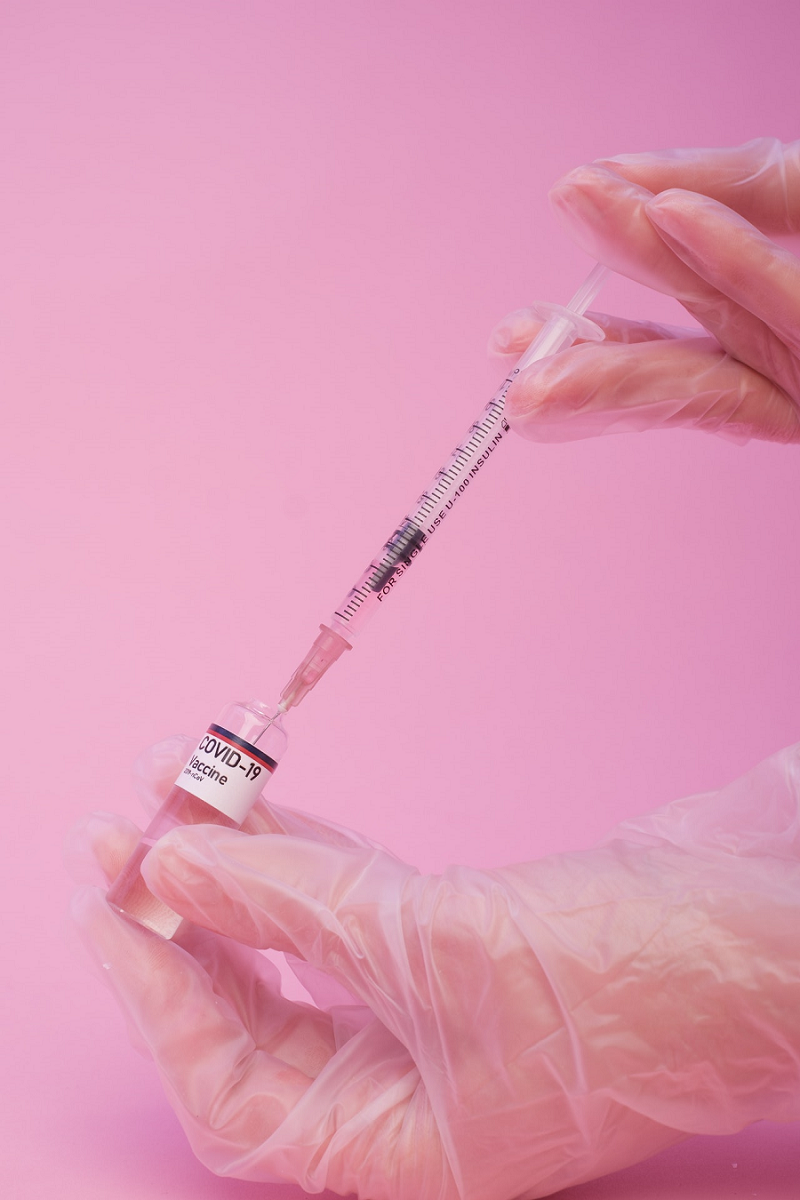One year of COVID-19: Where do we stand?

It’s been more than a year since the World Health Organization declared the COVID-19 outbreak a global pandemic. Since then, more than 540,000 Americans have succumbed to the virus, and life as we knew it has been uprooted both nationally and globally.
A panel of experts at Baylor College of Medicine, including Drs. Peter Hotez, Pedro Piedra, Jill Weatherhead, Robert Atmar, Hana El Sahly, Prathit Kulkarni, and James McDeavitt, reflect on the past year and share what they are optimistic about, as well as their thoughts on travel, herd immunity, variants and more.
Q: How can we increase vaccinations worldwide?
Hotez: We need a low-cost “people’s vaccine” for the world and that’s the focus of our efforts at Baylor. Our vaccine is a recombinant protein vaccine using the same yeast fermentation technology as employed for the hepatitis B vaccines, which has been in use for more than three decades. Because this can be scaled at low cost and stored through simple refrigeration, it may become one of the most accessible vaccines globally.

Q: What needs to happen to reach herd immunity in the U.S.?
Piedra: We have three SARS-CoV-2 vaccines that have received Emergency Use Authorization (EUA) approval and hopefully more in the months to come. The number of vaccine doses and vaccination coverage of at-risk adults are rising. The expansion of SARS-CoV-2 vaccines for all adult age groups will be the safest and quickest way to have both direct protection from the vaccine and indirect or herd protection in the community.
Q: What will the “new normal” look like as vaccination rates increase?
Weatherhead: Normalcy will come gradually over the next months to years as vaccine distribution increases around the country and around the world. As already described by the CDC, activities such as meeting with family, friends and co-workers who are vaccinated and maskless will become mainstream.
Hopefully, once more adults are vaccinated, travel restriction will ease across the U.S. This will likely be followed by increasing the size of events that can be safely held indoors, and then later holding sizable events without masks. But this progression will largely depend on the ability of vaccines to protect against evolving variants and the ability to update the vaccines based on the vaccine variants that are circulating in the community.
Q: Where are we with variants? What should we be concerned about?
Atmar: Variants have emerged, and some can still cause significant illness in some persons who recovered from a first episode of COVID-19, due to the variant’s different strain. The biggest concern is that these variants will spread and continue to cause serious disease, hospitalizations and death. The good news is we know that the Johnson and Johnson vaccine provides some protection against at least one variant (from South Africa), and it provides good protection against more serious disease and death.
We expect that the mRNA vaccines (Pfizer and Moderna) will provide protection at least to the same degree as the Johnson and Johnson vaccine, but studies to confirm this expectation have not yet been reported. Studies are planned or underway to evaluate vaccines modified to prevent disease due to the emerging variants so that if they become more of a problem, we will be ready.
Q: Where do we stand on effective COVID treatments?
El Sahly: The landscape of COVID-19 therapy has improved from a year ago. For hospitalized patients, the antiviral Remdesivir has been shown to effectively shorten the hospitalization. Immunomodulators such as steroids and baricitnib have also been demonstrated to have a role in helping those with severe inflammation. Monoclonal antibodies likely have a role in treating COVID-19 patients early in the disease; although combination monoclonals, as opposed to single monoclonals, are becoming more established.
Q: Where are we with concerns about travel and infection?
Kulkarni: As of March 2021, the CDC still recommends that people try to defer nonessential travel within and outside of the United States, even for folks who are fully vaccinated. That guidance may change moving forward as more people get vaccinated and if case numbers of COVID-19 continue to decline. It’s important to note that all decisions are a risk-benefit calculation. There could be circumstances that necessitate traveling for someone at the current time, such as caring for a family member, for example.
The main consideration when traveling internationally is the nature of the outbreak in the destination. Some areas of the world currently do not have a lot of SARS-CoV-2 circulation; other areas have significant ongoing transmission.
Travel time is another consideration. The farther away a place is, the longer time someone might have to spend traveling on a plane or in transit in general.
Q: How are we doing with vaccination in the U.S.?
McDeavitt: The U.S. is doing great, now vaccinating more than two million people per day. I do worry about a few things. I hope we don’t relax our good viral control practices, which will delay our journey to true herd immunity. Increasingly, I am worried the U.S. will get things under decent control, while much of the rest of the world struggles.
Controlling the virus globally is important from a humanitarian perspective; it’s also important economically as we are interconnected. And from a public health perspective, we don’t want developing countries to become breeding grounds for new and potentially more dangerous variants.
Q: Where are we with children and the vaccine?
Weatherhead: Children age 12 years and older have been enrolled in clinical trials for mRNA vaccination from Moderna and Pfizer since last fall. Additionally, in March 2021, Moderna began a phase 2/3 clinical trial for children age six months to less than 12 years. Other vaccine groups will likely be following soon.
It is critical to have children vaccinated to aid in the development of herd immunity, but trials are necessary to ensure the dose and duration of vaccine are appropriate and safe for younger children.
Q: What are you optimistic about?
Kulkarni: The distribution of the authorized COVID-19 vaccines, as well as the prospect of additional vaccines potentially coming in the future. I am also encouraged by the recent downward trend of new daily COVID-19 cases in the U.S. and around the world. I am optimistic that we are slowly but surely returning to more of a state of normalcy.
Hotez: I’m hopeful that the U.S. will be able to vaccinate our way of out of the epidemic by the summer, with marked slowing of asymptomatic virus transmission.
Piedra: Vaccine studies are now expanding into the pediatric population as well as pregnant women. This is a time of great optimism that we are finally turning the tide on the control of this unprecedented pandemic.
El Sahly: The remarkable roll out of vaccination at the rate of two million doses per day is going to decrease the susceptibility of the general population to COVID-19.
The other piece of optimistic data is the decrease in COVID-19 case fatality ratio. It remains to be seen whether it’s all due to the changes in how we take care of the patients, or the virus-host interactions evolving over time, or both.
Atmar: Vaccines will soon be available for all adults who want them, and later this year vaccines should also become available for children.
Weatherhead: Vaccine development and rollout as a means to get back to a more “normal” lifestyle. We currently have FDA EUA on three highly effective vaccines in the U.S. that have been proven both in clinical trial as well as in real-life scenarios to prevent severe disease, hospitalization and deaths.
Additionally, early studies suggest that many of these vaccines prevent asymptomatic disease and thus reduce asymptomatic transmission. And there are several more vaccines on the way. This is an amazing feat and a testament to the hard work of the scientists and clinical trial volunteers who pushed these novel technologies forward.
McDeavitt: I’m optimistic that the worst is behind us, and we are close to getting back to relatively normal life. I’m also optimistic about Baylor – during the pandemic, in difficult circumstances, we proved that we can do big, important things, do them quickly, and do them well. I think this is lesson we will carry forward.
COVID-19 Resources
See healthcare and community resources on Baylor’s response site.
Read the Resilience Through COVID-19 series.
-By Nicole Blanton and Dipali Pathak



